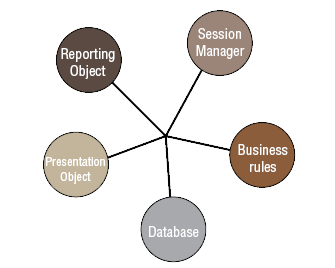B2B company turnaround for
growth and acquisition
Background
A group of new investors in a B2B company wanted to know what IT resources and modifications would be needed for a rapid expansion of the business. The company’s core business was providing general contractors with online bid management capabilities and access to local subcontractors.
While the current business model was successful, it could not scale effectively. The new investors saw the company as an opportunity for a turnaround and potential sale. They wanted to expand to multiple locations and grow the subscriber base of both general contractors and subcontractors. Rapid expansion and new sites would require an overhaul of current IT systems and networks to handle an influx of new customers and support for new offices.
Blue River International was engaged to help C-level executives understand the current IT operations and determine what additions and changes would be required to achieve the new expansion goals.
Challenges
BRI worked with executives and other staff to analyze the existing IT architecture, infrastructure and systems and to develop a roadmap for improvements.
Our consultants soon identified a number of key weaknesses:
- The company’s critical application platform was sluggish and inflexible and could not support the expanding customer base.
- The company’s IT staff had low morale and lacked skills and technical expertise required to scale the business. No industry best practices were used. There was no talent acquisition, retention or training plan in place.
- The company had relied on offshore software developers to add features and functionality based on IT input. But the vendor’s solution was not in line with the company’s business vision. Unstable software led to finger-pointing between the software vendor and company’s IT staff.
- The company’s Web hosting service and internal data center lacked adequate resources; as a completely Internet-based business, the company was sorely in need of a larger, more robust hosting service.
Solution
BRI provided a strategic roadmap to overhaul the IT department. The plan called for additional executive and development resources to augment existing staff. To facilitate execution of the plan, our consultant was engaged as interim CIO, working closely with executives and staff to identify gaps in IT systems, people and processes.
Deep gap analysis revealed additional problems, for which we recommended and implemented solutions:
- Application servers were significantly overtaxed. Software changes were a confusing patchwork and documentation was nonexistent. To improve performance and scalability we implemented an n-tier architecture on the application servers, avoiding an expensive investment in a new database platform that the company was on the verge of purchasing. This database solution was being marketed as the “fix-all” for the application issues.
- To address the company’s core application, we worked with the technical staff to produce detailed requirements that matched the business vision to scale the company. A new Web services application was developed with strict quality controls and industry best practices. This application (diagram below) was designed to be modular and scalable, with each function existing as its own module. We developed a phased approach to introduce the application so day-to-day operations and customer interactions would not be impacted. We also outlined a roadmap to integrate the company’s existing CRM solution with the revamped B2B platform. The accounting and payroll system was moved from the existing infrastructure to its own standalone Local Area Network (LAN) to provide security.
- To solve Web services deficiencies, we switched the company to a well-established Internet provider with national presence. The new provider was able to provide Internet connectivity in multiple cities with minimal lead times and significantly lower costs for telecom infrastructure deployments. The infrastructure for the new B2B solution was hosted at a large Web hosting company that could provide assistance with server and connectivity issues and provided network management capabilities around the clock.
- To address the need for additional staff resources, we hired new software development directors, database administrators, programmers and quality assurance personnel. We also trained employees in new technologies to bolster their skills.
- Finally, we outlined a future roadmap for the company. To assure maximum IT involvement, the CIO/CTO regularly met with the Board of Directors, attended meetings with investors and prominent clients, and visited trade shows.

Ultimately, BRI was able to contribute substantial improvements to the organization. With modifications to servers, CPU utilization dropped significantly from 90 percent to 30 percent, despite an increase in customers. New staff and strong document management policies increased the department’s productivity. Changes to infrastructure made IT deployment in new cities fast and simple, while a strategic road map simplified system launches in new locations.
All the improvements enhanced the ability of investors to solicit bids for sale of the company. Joint presentations with the CEO and other C-level executives were made to potential buyers and ultimately, a competing firm acquired the company.
Our strong partnership with C-level executives, as well as a thorough review of business goals, ensured that the revamped IT department remained a seamless business enabler.
All the improvements enhanced the ability of investors to solicit bids for sale of the company. Joint presentations with the CEO and other C-level executives were made to potential buyers and ultimately, a competing firm acquired the company.
